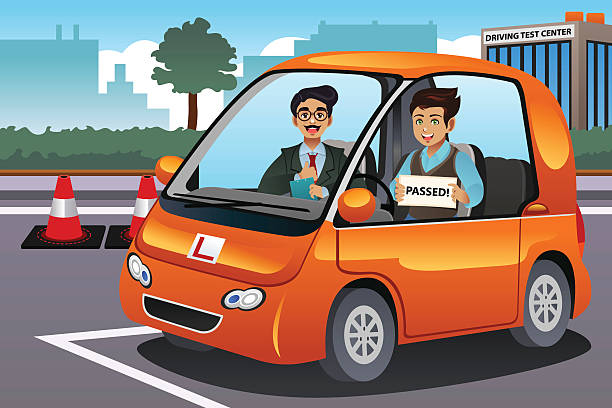Written By Ellen Ryan
Do you remember when you thought one of your parents should consider not driving anymore? Have you stopped accepting rides from one friend, and then another, because their driving behaviours kept you on edge?
Do you remember saying to your friends or siblings that you hoped you would be better prepared to stop driving when the time came?
Driving is important for many of us for connecting with family and friends, for shopping and other errands, for medical appointments and for participating in our community. In addition, losing our driver’s license can contribute to a deep loss of identity, especially when age-related changes are already pecking away at our sense of competence.
For years we have probably taken our ability to get around by car for granted. How can we practice good driving health as we age?
Age-Related Conditions Affect Driving Safety
Health-related changes that impact our behind-the-wheel abilities include: cognition, vision, hearing, flexibility, movement, and strength. Medications can also reduce driving abilities.
These changes do not happen at any particular time, but they are more and more likely as we age. Many people notice vision, decision-making, attention and flexibility changes by the age of 70, even more by the age of 80. We can still drive safely with modest changes. Sometimes, driving becomes difficult because of minor changes in several areas.
Smart Car Features can Assist Older Drivers
When my husband and I went to purchase a new car this past year, we looked for smart car features that can assist older drivers. Our new car has a backup camera with a wider view, which picks up pedestrians and cyclists from a distance as well as cars. The screen is easier to see, especially in the sunshine.
New features for us are automatic lights, parking brakes, and windshield wipers. So many fewer aspects of driving to keep track of. Yet, the driver has to be vigilant in case one of these features does not work as required.
What we most appreciate are the warning signals regarding lane changes – lights on the left and right mirrors to warn when a lane change is unsafe.
When planning to change vehicles, older adults should study reviews of current safety features available on various models.
Ontario Test for Drivers over 80 years of Age

Now in Ontario, we have the help of required tests of brain health for drivers over 80. The Clock and Visual Search tests are easy to pass for healthy older adults but increasingly tough for those with cognitive impairment. Failing does not mean loss of license, but a road test. Another chance to show continued skill in driving.
Also required is a workshop on defensive driving, during which the facilitator encourages older adults to continue driving if they are still able. Moreover, tips are offered, such as doing neck exercises before taking the wheel; taking 3 right turns to avoid a regular, but challenging, left turn; and avoiding night driving while awaiting cataract surgery.
Making a Plan for Retiring from Driving – or reducing our driving
McMaster Optimal Health offers this brief lesson for driving health.
The best person to initiate the question about safe driving is the driver themselves. We need to prepare to drive (checking seating and mirrors, perhaps doing neck stretches, thinking about destination and route ahead of time). We can learn to be aware of how we are doing.
Warning signs of unsafe driving (from the CAA) include:
- Have I been issued two or more traffic tickets or warnings in the past two years?
- Have I been involved in two or more collisions or “near-misses” in the past two years?
- Do I have difficulty working the brake and gas pedals
- Do I occasionally miss stop signs and other traffic signals?
- Do I weave between or straddle lanes?
- Do other drivers honk or pass frequently, even when the traffic stream is moving relatively slowly?
- Do I get lost or disoriented easily, even in familiar places?
Options if We Think We Might Be an Unsafe Driver
Many older drivers voluntarily scale back on driving – avoiding night driving, avoiding highway drives or long-distance driving. This can be a good idea, though building up skills might be a better strategy. In an emergency, we are in trouble if we have not been doing much driving.
We can take a defensive driving course or talk with a health care professional.
St Elizabeth Driver Assessment and Training service is offered in Hamilton. Referral by a health professional is expected. Email: [email protected]
The Driver Assessment has three parts:
In-Clinic assessment by an occupational therapist, which might include the use of a computer test, the DriveABLE Cognitive Assessment Tool (DCAT);
On-Road assessment;
Feedback session (which might include a recommendation for training).
Developing Alternatives to Driving
Some older adults take the bus from time to time so that they would be comfortable if they needed to rely on transit. Sharing rides helps us become familiar with the joys of driving together.
Seniors planning to relocate should keep transit availability in mind. One can learn about subsidies for taxi rides and get accustomed to using Uber-type services. In some cases, individuals keep their car and arrange for a family member or paid helper to do the driving.
Offering rides now to friends is a strategy to build up a network of friends ready to give rides when the day comes that you don’t drive.
Further Learning
Changing Gears: Making a Plan for Retiring from Driving
Canadian Automobile Assn – Transitioning into Safe Seniors’ Driving
Smart In-Vehicle Technologies Can Improve the Comfort and Safety of Driving for Older Adults



